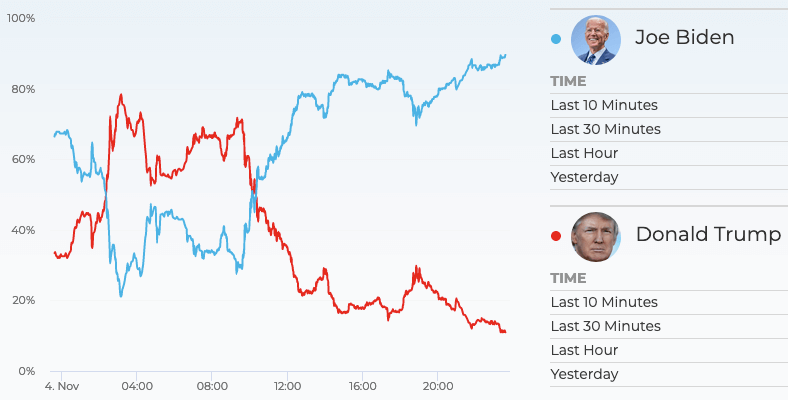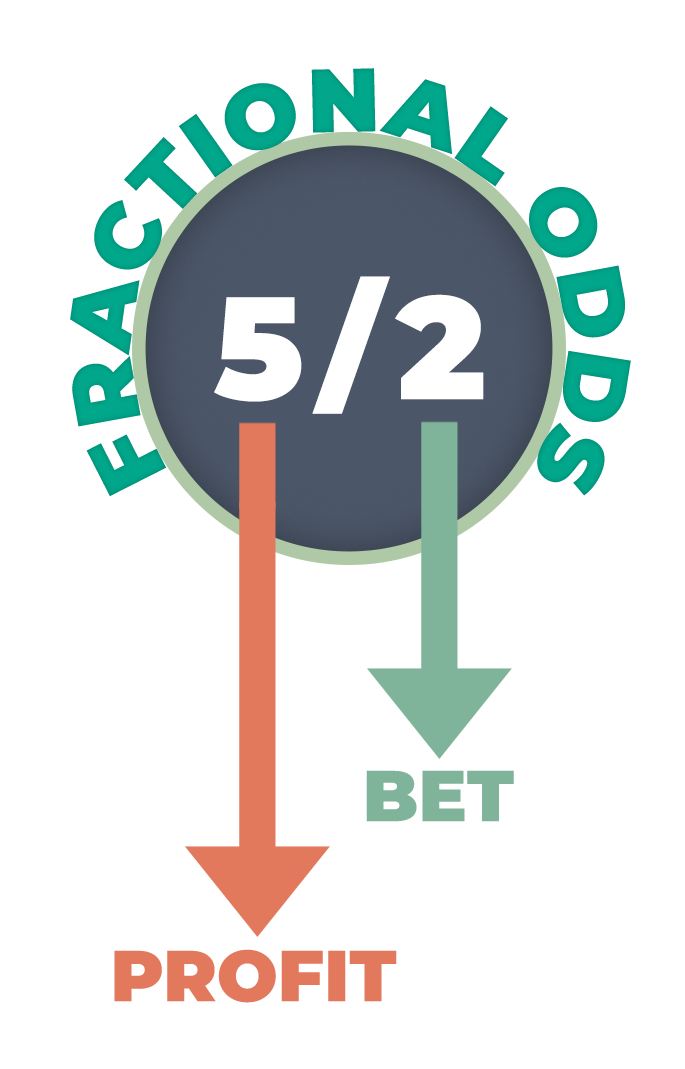Sports Betting Decimal Odds Average ratng: 5,0/5 8937 votes
Decimal Odds In Sports Betting Decimal odds are the easiest to calculate compared to other odds types. Bettors just need to take their stake x odds to equal their payout amount. For instance, if you bet $100 at 2.0 decimal odds, you’d get $200 if your bet won, your $100 stake back, plus your profit of $100. Sports Odds Explained: Decimal Odds Of the three types of odds you’ll come across, betting with decimal odds are the easiest to learn. Decimal style odds are typically used in Europe, but many Sportsbooks default to American odds. However, you should be able to set the preference to any betting style.
< Return to bet types explainedGo to how bookmakers make money >
There is a lot of jargon used in sports betting and it can be quite confusing, especially for a novice, but once you get to grips with the basic terminology, your betting experience will be enhanced. The first thing that any punter needs to do is understand how the odds work and what they mean.
Many betting websites - including the Betfair Exchange - now use decimal odds as standard, so let’s take a closer look at this popular format.
The handicapping and odds information (both sports and entertainment) found on SportsBettingDime.com is strictly for entertainment purposes. Furthermore, the unique odds we produce in select news articles are also for amusement, and are not available to be wagered on. We are not a sportsbook and do not take any wagers.
The purpose of sports betting odds
Betting odds may be displayed in three different formats at US sportsbooks and online and mobile sports betting platforms: American odds, fractional odds and decimal odds. Different formats don’t mean different odds; it’s simply a different way of presenting them. To convert decimal odds to moneyline odds, you need to break them down by whether the decimal is higher or lower than 2.0. 2.0 or higher: (decimal odds – 1) x 100 = positive moneyline odds; Less than 2.0: -100 / (decimal odds – 1) = negative moneyline odds; Getting into some examples: 9.0 odds: (9.0 –.
Odds are a numerical way of describing the probability of an outcome occurring. The odds are calculated by bookmakers like Betfair and Paddy Power in a way that allows them a small profit margin. For example, on a 50/50 coin toss, a bookmaker might offer odds of 49/50. If they get an equal amount of money bet on heads and tails, they would be guaranteed a small profit whatever the outcome.
What are decimal odds?
Decimal odds are a way of displaying odds in an easy to understand way.
In the above example, where the bookmaker offers odds of 49/50 on a coin toss, the odds are shown as a fraction. If we showed the same odds in decimal format, they would look like this:
- Decimal odds: 1.98
So, if a punter placed a stake of £1 on this bet and it was successful, they would receive £1.98 back, achieving a profit of 98p.
In decimal odds, odds-on selections will be expressed as values between 1.0 and 2.0
Many websites use the decimal format as standard when displaying the prices of sporting events. In fact, decimal odds are commonly used all over Europe. They are popular because they are so easy to understand, displaying the total return from a 1 unit stake.
As the unit stake is always included, decimal odds always have a value greater than 1.
Here is another example of how simple it is to read decimal odds:
- Odds: 6.0
- Stake: £1
- Winnings: £5
- Total return: £6
Decimal vs. fractional odds
Punters in the UK and Ireland might not be as familiar with decimal odds. In those regions, it is more common to see fractional odds such as 5/1 or 9/2. Fractional odds basically describe the winnings from a theoretical stake.
Fractional odds example:
- Odds: 5/1
- Stake: £1
- Winnings: £5
- Total return: £6
Where the odds are 50/50, the odds are described as Evens rather than 1/1.
The advantage of decimal odds
Fractional odds can sometimes be confusing as the calculation can produce very large numbers. For example, where the decimal odds are 1.46, the fractional equivalent would be 23/50. In this case, it is much easier to calculate the return from a £1 stake by using the decimal odds format.
In addition, fractional odds can be confusing when the probability is very high. For example, when decimal odds fall below 2, the fractional equivalent suddenly takes a different appearance as the second number becomes larger than the first number. Therefore, it is possible to have fractional odds of 2/1 and 1/2 and this can be a little confusing for novice punters.

Decimal vs. moneyline odds
Moneyline odds (also known as US or American odds) are used by bookmakers in America. The odds are presented in either a negative or positive format depending on the probability.
Moneyline odds are used by bookies in America
Positive moneyline odds show how much would be won from a $100 stake. In a sporting event involving two teams, the underdog always has a positive moneyline.
Positive moneyline example:
- Odds: +500
- Stake: $100
- Winnings: $500
- Total return: $600
Negative moneyline odds show how much would need to be staked to win $100. In a sporting event involving two teams, the favourite always has a negative moneyline.
Example
- Odds: -500
- Stake: $500
- Winnings: $100
- Total return: $600
If there is no clear favourite and the odds are 50/50, the moneyline is displayed as +100. Using the positive rule, a $100 bet would then return a $100 profit.
Converting moneyline odds to decimal or fractional odds is not always easy. However, the tools below can be used as a handy guide.
Why is understanding odds important?
Understanding how to read odds is a vital part of sports betting. If you do not know how to read the odds, you will never know if you are getting good value or what your potential returns might be.
In theory, decimal odds are the easiest to understand and many punters have switched to using decimal odds after years of using the fractional format. Decimal odds can be read at a glance and do not require any tricky calculations.
Most betting websites - including Betfair and Paddy Power- have a settings menu where you can change the way that odds are displayed. This means you can choose the option that suits you best. But even if you prefer to use fractional odds, it still makes sense to learn how to read decimal odds as they are becoming more widely used across the internet.
< Return to bet types explainedGo to how bookmakers make money >
Check out the latest horse racing odds for today's races over on the TImeform horse racing site or get odds for today's football matches at Infogol.net.
[ BET TYPES EXPLAINED WIDGET ]
Reading sports betting odds can seem complicated at first glance.
-110
11/10
1.91
What do they all mean?
All of the above numbers represent different ways to display betting odds, however they all represent the same thing.
All betting odds represent the implied probability to win a bet. The way that number is displayed is where things can differ.
Types of Betting Odds
There are three main ways to display betting odds:
- American
- Decimal
- Fractional
Each of the odds formats represent a chance of winning, just displayed in a different way.
Most sports betting sites will give you the option in how you display your sports odds, so it is important to understand how to read them.
All sports betting types will have odds attached to them: point spread, money line, total, futures, props, and more.
How to read American odds
In the United States, it is standard to use the American odds format (shocking!). Each bet will always have a plus (+) or minus (-) in front of a number greater than 100.
Take for example how the following moneyline bet odds would be displayed for the following sporting event:
Chicago Bears -196
Washington Redskins +170

Since this is a moneyline bet, these odds represent the implied probability each team has to win the game.
American odds can be broken down into two categories: favorites and underdogs.
How do Plus and Minus odds work?
Favorites Odds
When a bet is a favorite, it means the implied probability (win percentage) is greater than 50%. Favorites will always have a minus (-) sign and will always be “negative odds”. Ex: -150.
Favorite odds can be read as “to win $100”.
Meaning if the odds of a bet were -150, you would need to bet $150 to win $100. Note that you do not need bet in $100 increments.
This same ratio would apply to different bet sizes: Bet $15 to win $10, bet $1.50 to win $1, etc.
If you were to read betting odds of -150 out loud, you would say “minus one fifty”.
Underdog Odds
The other side of American odds are underdogs. Underdogs have an implied probability of less than 50%.
Underdog odds are always represented with a plus sign (+) in front of the number and will always be “positive odds”. Ex: +150.
Underdog odds are interpreted different than favorites. Underdog bets are betting $100 “to win” whatever the odds are.
In the +150 example, you would bet $100 to win $150. Again, you can bet any amount you would like. It doesn’t have to be $100. Ex: bet $10 to win $15, bet $1 to win $1.50, etc.
How to read decimal odds
Decimal odds are the easiest odds type to interpret. They are used by most people outside of America, most notably Europe. The Decimal format are also the easiest odds type to convert to an implied win percentage.
Decimal odds tell you what your return will be given your bet amount (or “stake”).
For example, if you bet $10 on the New York Knicks to win at odds of 2.25, your return (or “total payout”) would be $22.50 if they won.
Return does not take into account your original bet amount. Therefore your profit, or “to win” amount, would be $12.50 ($22.50 return – $10 wager).
Note that the return aspect is the key difference between Decimal and American odds. The Decimal format will tell you your return, while the American format will tell you your “to win” amount.
How to read fractional odds
Fractional odds are simply decimal odds represented as a fraction. For example, 3/1 odds are the decimal equivalent of 4.
The biggest difference between fractional and decimal is that fractional tells you the potential profit while decimal tells you the return.
Sports Betting Odds Calculator
Going back to the previous example, a $10 bet at 3/1 odds would represent $30 in profit.
A $10 bet at the equivalent odds of 4 in decimal format would return $40. Subtracting your $10 bet from the return would give you your profit of $30.
Fractional odds can be read as the first number being the potential profit while the second number is the amount you will need to risk for that profit.
For example, fractional odds of 23/20 would represent a bettor needing to risk $20 in order to profit $23.
Nfl Sports Betting Odds
Fractional odds are most common in horse racing and futures markets.
Sports Betting Odds Today
Related: Find more sports betting guides here